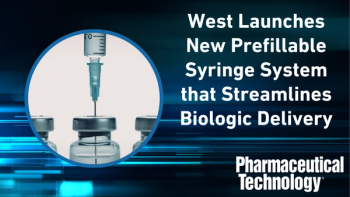
BioOutsource Releases Video Addressing Issues with using ADCC Assays
BioOutsource releases informational video detailing issues associated with ADCC assays and how to effectively analyze them.
Sartorius Stedim Biotech’s (SSB) BioOutsource released a video on Nov. 17, 2015 detailing the issues associated with using antibody-dependent cell-mediated cytotoxicity (ADCC) assays.
Bioassay development experts Catriona Thomson, PhD and Daniel Galbraith, PhD discuss the factors affecting the use of ADCC assays in the manufacturing process of biosimilars. They also outline what to consider when determining comparability and design of biosimilar drugs.
Thomson lists multiple reasons why ADCC activity can make the biosimilar approval process more difficult. Immunoglobulin (IgG) type 1 is the most commonly used therapeutic monoclonal antibody, and all of these types of molecules have the potential for ADCC activity. ADCC activity contributes to clinical efficacy, therefore, it is a regulatory requirement to show that ADCC activity in biosimilar candidates is comparable to the ADCC activity in innovator molecules. ADCC is also the hardest feature to categorize and control in biosimilars, according to BioOutsource.
The video displays comparison data between two parallel samples, common results that scientists may receive when comparing a biosimilar and an innovator molecule.
“Here we see two molecules that look very different, a result like this will frequently lead back to the drawing board, requiring changes to the manufacturing process,” said Thomson. “And that’s if you’re lucky to spot the differences early on.”
The video also includes an explanation of the science behind ADCC assays and how data analysis is still evolving. “Having a biosimilar and an innovator molecule with different ADCC activity can result in costly changes to the manufacturing process and delays with regulatory approval,” noted Galbraith. “It is therefore vital to understand at the earliest stage of development the types of ADCC assay available to prove comparability.”
Galbraith provides a sample data analysis of two drugs, comparing cell death and concentration. He then explains the aspects used to measure potency: the amount of material required to elicit a defined response and the maximum ability to kill cells. He also provides an examination of sensitivity for effector-cell preparation.
Source:
Newsletter
Get the essential updates shaping the future of pharma manufacturing and compliance—subscribe today to Pharmaceutical Technology and never miss a breakthrough.




